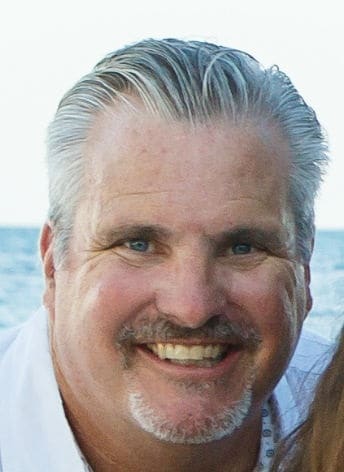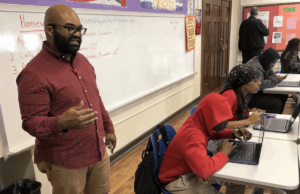SmartStart: Starting the School Year Off Right

Jim George’s now infamous quote – “It’s not how you start that’s important, but how you finish” – has been lauded by many as almost a foundational philosophy for life. However, for those of us who are responsible for starting the school year each year for millions of students, we may want to flip that line of thinking on its ear. Seems that how we start the school year might have more to do with how we finish than anything else.
In all my years as a classroom teacher, program advisor, and site leader, I worked hard to make the first day and week of school was engaging, inspirational and motivational as possible. But no matter how hard I, and many of my colleagues, tried, it seems that the institutional expectations took over and the emphasis became less about student engagement and more about rules, expectations, syllabi, policies, contracts, books and academics. That’s right. After all, does it seem reasonable that the earlier we start academics, the more academic success we would have?
Well, as I suggested earlier, maybe it’s the exact opposite. Turns out a happy accident showed me what I always had known and tried to create. And that is if we focus on anything but academics to start the school year – such as culture, opportunity, creativity, relationships and the “why” – we may actually produce a more academically successful student and school year. This happy accident was as the school year opened in the fall of 2008 when then brand new Minarets High School prepared for the first week of school. As our luck would have it, our new school buildings and campus were not going to ready or inhabitable that first week.
Indeed, we were going to have to bus our new student body of 9th and 10th graders to an off-campus location and mimic what would seem like the first week of high school. We, fortunately, found a lakeside conference center that would serve as our campus this historic first week. But instead of classrooms and standard presentations about the aforementioned scripted rules and policies, we would be forced to meet as a large group in the conference room and then peel off in small groups for intimate sessions on varied topics. It’s this conference environment that inspired us to completely scrap the standard first day/ first-week jargon and reinvent the first week of school. And ultimately, this is what would later be dubbed as SmartStart by my colleague and co-conspirator Jon Corippo.
Our first week of school focused on all students getting to know one another, as well as every teacher and staff member. We shared lessons, activities, talks, simulations, challenges and guest speakers on things such as success skills, technology, relationships, careers, project ideas and more.
We had several goals (deliverables) in mind for this first week. They included, but were not limited to every student knowing whom every staff member was, how our school and their experience was going to be different, how we cared about what students thought and wanted, how they need to engage and produce in productive (but personalized) ways, how they now had good friends the first week of high school and how learning could be relevant and fun.
This first week of school, SmartStart, became a tradition that was improved, expanded and redesigned each and every year. It became a collaborative effort where all staff submitted lessons and presentations that were shared and commonly implemented. It expanded into tech integration and project management where all of our students (even when we had 500 students) would produce a video, a podcast and a presentation the first week of school. In addition to culture building and schoolwide lessons, we modeled that all students could and would produce high-quality work.
Topics for SmartStart sessions can almost be anything. Here are some examples we focused on each and every year (sample schedule here):
- School-wide activities, challenges, culture building
- School-wide messaging – i.e. digital footprint
- School-wide skills – i.e. presentation
- School-wide technology lessons – Google, other
- School-wide forms, formats, rubrics, workflows
- School-wide life lessons, professional lessons
- School-wide products, sharing, showcasing, exhibiting
- School-wide guests, professionals, experiences
SmartStart, or some derivation of the same, continues today at Minarets High School. And many other schools have been doing something similar. These have included school-wide design challenges, learning expeditions and service learning experiences – all with the idea of emphasizing everything but academics in order to build the skills and culture conducive to academics.
Each year, some teachers and staff members struggled with the concept. They fell the traditional pressure of “getting started” on schoolwork. We continuously had to remind them, and ourselves, that it was the student and staff culture we built that first week of school that would make high-level student work and academics a reality throughout the school year. Indeed, we knew whatever we created, or didn’t create, that first week of school, would indeed define the year. We also knew that whatever good things were born during SmartStart, that they would have to re-visited, nurtured, refined and modeled throughout the school year by staff and students.
Additionally, when one enjoys success based on some innovation or departure, such as SmartStart, it also influences and creates other innovations. We continued to take our SmartStart philosophy to other aspects of the school year that needed a redesign or boost. For example, any day before a long vacation (Thanksgiving, Winter Break and Spring Break) became an opportunity to not only re-visit our school culture and climate priorities, but engage students in new ways through service learning or career activities that would be a departure from the typical class schedule and non-productive days before vacations. Even our year-end activities became giant celebrations of culture, performances and recognition – instead of the last day of school being another lost day. These final days before breaks are often now called Lame Duck Days. We turned them into SmartStart or SmartReboot days. These last days before vacations became giant intercessions where both teachers and students go to pursue specialized and unique topics, lessons, careers or volunteer work that was outside of their normal course and school work or experience.
This is the power of SmartStart. How we start anything – a lesson, a project or even a school year – might be the most important thing in terms of what gets finished or the end result. Let’s not only rethink how we do school, but how we start school. Here are some additional resources for SmartStart:
- Smart Start Resources
- Project of How
- Global Cardboard Challenge
- 1,000 + Design, STEAM Challenges on Pinterest
- 100 Engineering Projects For Kids
- Genius Hour
- Introducing #20 Time
- The Future Project
- 35 Service Project Ideas For Kids
- Lame Duck School Days
- 10 Team Building Activities For First Week of School
- Design Thinking Challenge New Tech High
If you find this to be a valuable exercise, I hope you’ll share more about your experiennce in the comments section below.
For more, see:
- Letting Students Lead School Culture
- How to Create & Cultivate a PBL Culture
- How To Get Students Talking About Their Own Social-Emotional Learning
Stay in-the-know with all things edtech and innovations in learning by signing up to receive our weekly newsletter, Smart Update.








0 Comments
Leave a Comment
Your email address will not be published. All fields are required.